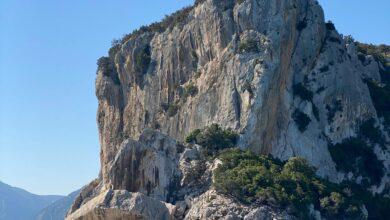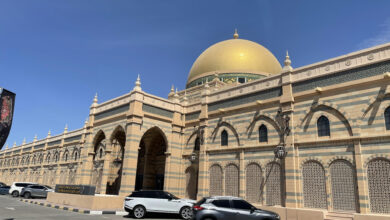🏰 Cultural Heritage of Dubrovnik, Croatia 🇭🇷
Explore the Rich History and Architectural Marvels of Dubrovnik's Cultural Heritage

Introduction
Nestled along the azure Adriatic Sea, Dubrovnik stands not just as a picturesque coastal city but as a living testament to centuries of history and cultural richness. Join us on a virtual journey through the cobbled streets and imposing walls as we unravel the captivating cultural heritage that defines Dubrovnik. From the medieval fortifications to the timeless elegance of the Old Town, Dubrovnik’s cultural tapestry awaits exploration.
Walls of Dubrovnik – Guardians of Time
Historical Background of the City Walls
The city walls of Dubrovnik stand as timeless sentinels, weaving a narrative that transcends centuries. Constructed between the 12th and 17th centuries, these imposing fortifications encapsulate the city’s rich history. Originally built to repel invasions and protect the flourishing maritime trade, the walls evolved over time in response to geopolitical changes.
Dubrovnik, a maritime republic, faced constant threats from various powers, prompting the construction of robust defenses. The walls were strategically positioned, encircling the city and extending over 1.9 kilometers. They witnessed the ebb and flow of empires, from the Byzantines to the Venetians, Ottomans, and the Austro-Hungarian Empire. Each era left its mark, contributing to the walls’ architectural diversity and historical significance.
Description of the Architectural Significance and Defensive Role
The architectural brilliance of the Dubrovnik walls is a testament to medieval engineering ingenuity. Built with a combination of limestone and mortar, the walls showcase a harmonious blend of form and function. Towers, bastions, and forts punctuate the circuit, providing vantage points for defenders. The Minceta Tower, the highest point, offers panoramic views of the city and the Adriatic Sea.
The defensive role of the walls was paramount during times of conflict. With a thickness ranging from 3 to 5 meters, the walls were virtually impregnable. The strategically positioned forts, such as Fort Lovrijenac, acted as formidable deterrents. A walk along the walls offers a glimpse into the military prowess of Dubrovnik, where intricate systems like the Revelin Fortress showcased the city’s commitment to safeguarding its independence.
Modern-Day Importance and Views from the Walls
While the need for military defense has diminished, the walls of Dubrovnik remain vital to the city’s identity and economy. Designated a UNESCO World Heritage Site, they attract millions of visitors annually. The walls provide a captivating journey through time, allowing modern visitors to traverse the same paths once trodden by medieval defenders.
Beyond their historical allure, the views from the walls are breathtaking. The terracotta roofs, the azure Adriatic, and the juxtaposition of ancient and contemporary architecture create a visual feast. The walls not only preserve Dubrovnik’s past but also offer a unique perspective on its present. Today, they serve as a bridge between the ancient and the modern, inviting travelers to immerse themselves in the guardianship of time.
Old Town – A Living Museum
Dubrovnik’s Old Town stands as a UNESCO-listed marvel, a testament to centuries of rich history and cultural significance. Nestled within ancient city walls, this living museum offers visitors a unique opportunity to step back in time and immerse themselves in the charm of a bygone era.
Exploration of Historical Landmarks
The Old Town is a treasure trove of historical landmarks that weave together the narrative of Dubrovnik’s past. One such iconic structure is the Rector’s Palace, a masterpiece of Gothic and Renaissance architecture. As the seat of the Republic’s ruler, it echoes with the footsteps of ancient leaders and echoes stories of political intrigue and power. Visitors can explore the palace’s intricate rooms, adorned with period furniture and art, providing a glimpse into the opulence of Dubrovnik’s history.
Refined Elegance of Sponza Palace
Sponza Palace, another jewel within the Old Town, showcases a harmonious blend of Gothic and Renaissance styles. Originally built as a customs house, it later served as a mint and a bank. Today, its elegant facade and well-preserved interior serve as a testament to the city’s economic prowess and cultural refinement. The palace hosts various cultural events, adding a contemporary touch to its historical grandeur.
Intertwining of Architecture, Art, and History
In the Old Town, the streets themselves tell a story, with every cobblestone and archway revealing a chapter of Dubrovnik’s past. The intertwining of architecture, art, and history is evident in every nook and cranny. Walking through Stradun, the main thoroughfare, visitors are surrounded by splendid examples of Baroque and Renaissance architecture. The city’s churches, such as the St. Saviour Church and the Church of St. Blaise, showcase masterpieces of art that complement the historical narrative embedded in their walls.
Immersive Experience
Exploring the Old Town is not merely a sightseeing venture but an immersive experience. The narrow alleys, hidden courtyards, and charming squares transport visitors to a different era. As one wanders through this living museum, the city’s past comes alive, providing a deep connection to the cultural heritage that has shaped Dubrovnik into the enchanting destination it is today.
Stradun: Dubrovnik’s Storied Main Street
Dubrovnik’s Stradun, also known as Placa, stands as the city’s central street, weaving through the heart of this enchanting Croatian destination. This iconic limestone-paved thoroughfare serves as a vibrant testament to the city’s rich history and cultural heritage.
Historical Evolution and Significance
Stradun’s history is a tapestry of Dubrovnik’s evolution over the centuries. Originally constructed in the 12th century, the street underwent significant renovations after a devastating earthquake in 1667. Today, Stradun showcases a harmonious blend of Gothic, Renaissance, and Baroque architectural styles. As you stroll along its polished stones, you’ll be walking in the footsteps of generations past, feeling the echoes of a bygone era.
The street holds immense significance as more than just a physical pathway; it symbolizes the unity of Dubrovnik’s diverse elements. Connecting the city’s two main entrances, Pile Gate and Ploče Gate, Stradun acts as a communal space where locals and visitors converge to share in the city’s vibrant spirit.
Vibrant Cultural Events and Traditions
Stradun is not merely a silent witness to history; it’s a stage where Dubrovnik’s cultural events and traditions come to life. Festivals, parades, and concerts regularly animate this bustling street. The city’s patron saint, St. Blaise, is celebrated annually with a grand procession that traverses Stradun, filling the air with music, colorful costumes, and a palpable sense of community.
The lively atmosphere intensifies during the Dubrovnik Summer Festival, an event that transforms the street into an open-air theater. Stradun becomes a backdrop for a myriad of performances, from classical music concerts to captivating theatrical productions. These cultural festivities not only entertain but also serve as a testament to the enduring spirit of Dubrovnik.
Embracing Tradition and Modernity
Stradun is more than a historical relic; it’s a dynamic intersection where tradition and modernity converge. While the architecture reflects centuries of heritage, the street also houses contemporary boutiques, cafes, and restaurants. Locals and tourists alike gather in this thriving hub to savor the unique blend of old-world charm and contemporary flair.
As you explore Stradun, the storied main street of Dubrovnik, you’ll discover a living testament to the city’s resilience, cultural richness, and the seamless integration of its past with its vibrant present.

Dubrovnik Cathedral – A Sacred Marvel
Historical Background of the Cathedral of the Assumption of the Virgin Mary
Nestled within the historic walls of Dubrovnik, the Cathedral of the Assumption of the Virgin Mary stands as a testament to centuries of religious and architectural significance. Dating back to the 17th century, the cathedral’s construction was commissioned after a devastating earthquake, replacing its predecessor. The location has a deeper historical context, as it was once the site of a Romanesque cathedral and later a Gothic structure. The present cathedral, with its Baroque facade and ornate details, narrates a rich tapestry of Dubrovnik’s past.
Architectural Features and Religious Significance
The Cathedral boasts a captivating blend of architectural styles, predominantly Baroque, reflecting the prevailing aesthetics of the time. Its grand facade, adorned with statues and intricate carvings, captures the eye and the spirit. Step inside, and you are greeted by a serene ambiance marked by vaulted ceilings, splendid frescoes, and a high altar dedicated to the Assumption of the Virgin Mary. The treasury holds a trove of religious artifacts, including relics and paintings by notable artists. The cathedral not only serves as a place of worship but also stands as an architectural masterpiece that resonates with the religious fervor of the community.
Preservation Efforts and its Role in Contemporary Dubrovnik
Preserving the Cathedral of the Assumption of the Virgin Mary is a priority for both the local community and cultural authorities. Restoration efforts have been ongoing to safeguard the structure from natural elements and the passage of time. The cathedral, while rooted in history, continues to play a vital role in contemporary Dubrovnik. It serves as a venue for religious ceremonies, cultural events, and a point of interest for tourists seeking a glimpse into the city’s rich heritage. The cathedral’s enduring presence connects the past with the present, maintaining its relevance in the cultural and religious life of Dubrovnik.
FAQs
Q. What makes Dubrovnik a UNESCO World Heritage Site?
A. Dubrovnik’s Old Town, surrounded by well-preserved city walls, is a UNESCO World Heritage Site due to its historical significance and architectural integrity.
Q. Which architectural styles are prominent in Dubrovnik’s Old Town?
A. The Old Town features a harmonious blend of Romanesque, Gothic, Renaissance, and Baroque architectural styles, creating a visually stunning and diverse cityscape.
Q. What is the significance of Dubrovnik’s city walls?
A. The city walls, spanning over 1,940 meters, served as a defensive structure and offer breathtaking views of the Adriatic Sea and the Old Town, providing a unique perspective on Dubrovnik’s beauty.
Q. How did maritime trade contribute to Dubrovnik’s cultural prosperity?
A. Dubrovnik’s strategic location facilitated maritime trade, allowing the city to establish economic ties with various civilizations. This cultural exchange enriched the city’s heritage and contributed to its prosperity.
Q. What is the Dubrovnik Summer Festival, and why is it significant?
A. The Dubrovnik Summer Festival is an annual celebration of performing arts, featuring music, theater, and dance performances. Held in historic venues, it adds a cultural vibrancy to the city, attracting locals and tourists alike.
Q. How does Dubrovnik celebrate the Feast of St. Blaise?
A. The Feast of St. Blaise involves religious ceremonies, a grand procession through the streets of Dubrovnik, and traditional folk music performances. It is a lively celebration honoring the city’s patron saint.
Conclusion
As we bid adieu to the sun-kissed shores of Dubrovnik, the echoes of its cultural heritage linger in our minds. The city’s ancient walls, the enchanting Old Town, and the sacred sites like the Dubrovnik Cathedral weave a narrative that transcends time. Dubrovnik’s cultural legacy serves not only as a source of pride for its residents but as a gift to the world—an invitation to step into a realm where every cobblestone tells a story, and every building whispers secrets of a bygone era. In preserving its cultural heritage, Dubrovnik preserves a piece of humanity’s shared history, inviting all who visit to become a part of its ongoing tale.
UP NEXT
https://touristeyes.com/tourism-in-the-city-of-bruges-belgium/




Facebook Comments